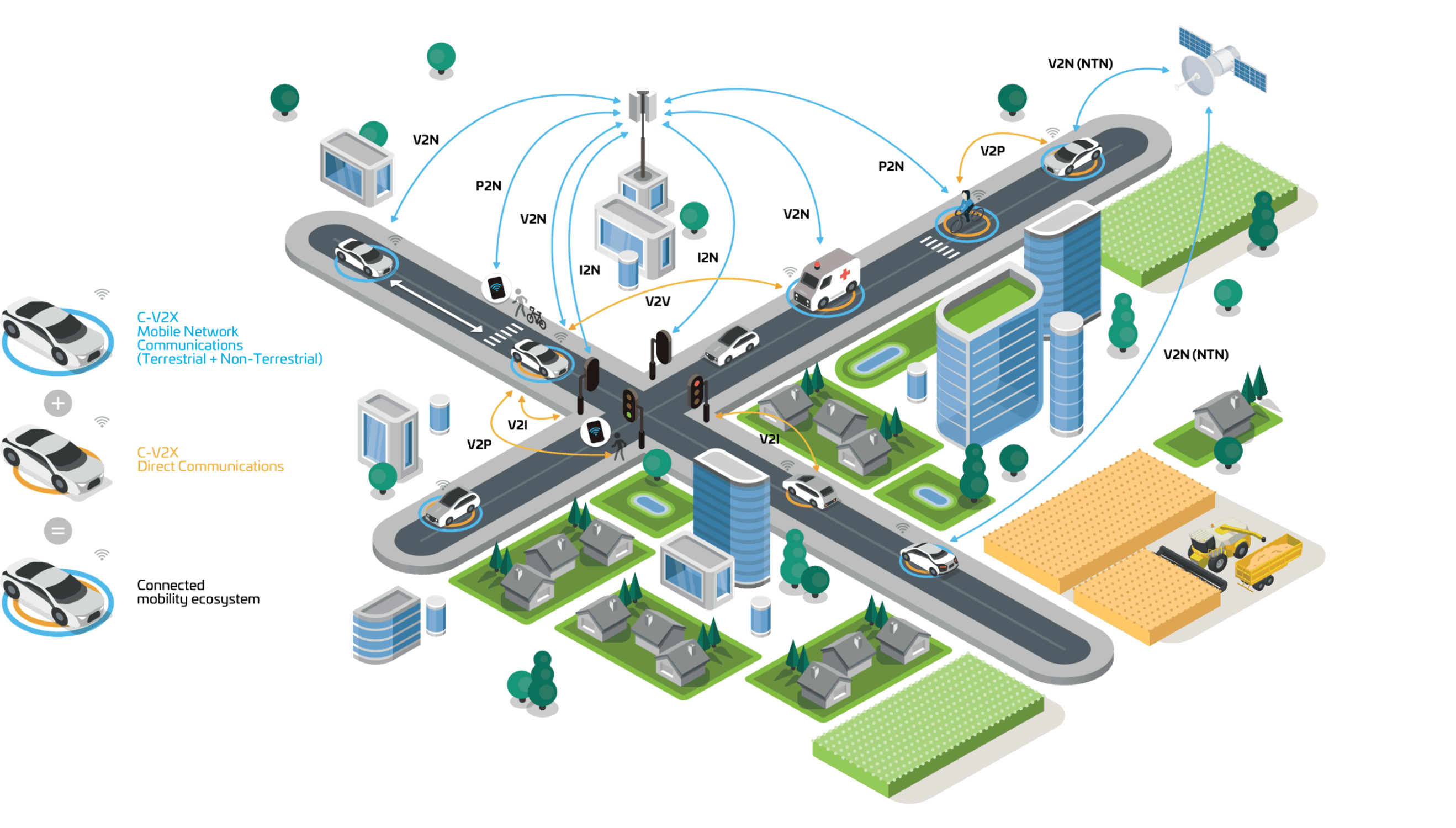
Connected Mobility
C-V2X explained
Cellular Vehicle-to-Everything, or C-V2X, is a connected mobility platform that allows vehicles to interact with their surroundings, such as other vehicles, cyclists, pedestrians, road infrastructure, or mobile networks.
To enable connectivity within the broader transport ecosystem, C-V2X uses two complementary transmission modes.
First, direct communications (PC5) works independently of cellular networks and allows vehicles to communicate with other road users (cyclists, pedestrians or other vehicles). Second, network communications (Uu) leverages conventional mobile networks to enable vehicles to receive real-time information about road conditions and local traffic.
By connecting individual vehicles and enabling the development of cooperative intelligent transport systems that reduce congestion and pollution, C-V2X can transform how we look at traffic information to enhance travel and increase road safety.
Leading the new era
of mobility
C-V2X continually evolves over multiple releases in 3GPP. Cellular-V2X (C-V2X) is the umbrella term which encapsulates all 3GPP V2X technologies, including both direct (PC5) and mobile network communications (Uu).
A major milestone was achieved in 2017 by completing LTE-V2X in Release 14, including both direct and mobile network communications delivering basic safety use cases. In 2020, 5G-V2X was completed in Release 16, also combining direct and mobile network communications to enable advanced and automated driving use cases.
Who is 3GPP?
3GPP is a worldwide Standardisation Development Organisation (SDO) developing standards for the different generations of mobile networks: GSM (2G), UMTS (3G), LTE (4G) and 5G, targeting a wide range of consumer and industry applications. When applied in a vehicle connectivity context the acronym V2X (vehicle-to-everything) is added.
C-V2X in detail

C-V2X provides one unified solution for V2V (vehicle-to-vehicle), V2I (vehicle-to-infrastructure), and V2P (vehicle-to pedestrian) operation with V2N (vehicle-to-network) by leveraging existing cellular network infrastructure.
- Device-to-device [1] is Vehicle-to-Vehicle (V2V), Vehicle-to-(Roadway) Infrastructure (V2I) and Vehicle-to-Pedestrian (V2P) direct communication without necessarily relying on network involvement for scheduling.
- Device-to-cell tower is another communications link that enables network resources and scheduling and utilises existing operator infrastructure. Device-to-cell tower communications constitute at least part of the V2I proposition and are essential to end-to-end solutions.
- Device-to-network is the V2N solution using traditional cellular links to enable cloud services to be part and parcel of the end-to-end solution.
In the device-to-device mode (V2V, V2I, V2P) operation, C-V2X does not necessarily require any network infrastructure. It can operate without a SIM, without network assistance and uses GNSS as its primary time synchronisation source.
C-V2X also supports V2N applications using existing cellular networks where other voices and data communications occur. V2N would deliver network assistance and commercial services requiring the involvement of a Mobile Network Operator (MNO).
Collectively, the transmission modes of shorter-range direct communications (V2V, V2I, V2P) and longer-range network-based communications (V2N) comprise what we call Cellular-V2X[2].
[1] Relies on the PC5 interface specified by 3GPP for device-to-device operation.
[2] See 3GPP TR 22.885 Study on LTE Support for Vehicle to Everything (V2X) Services.


